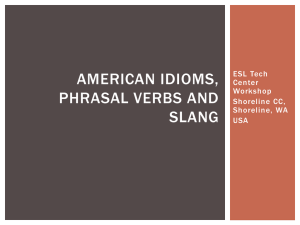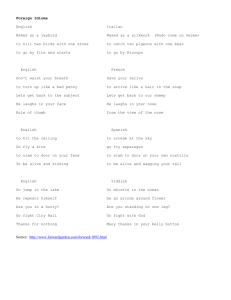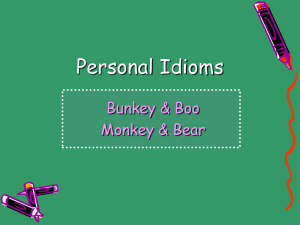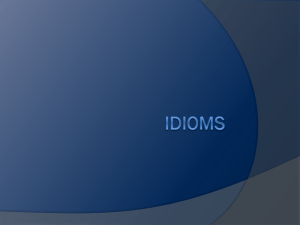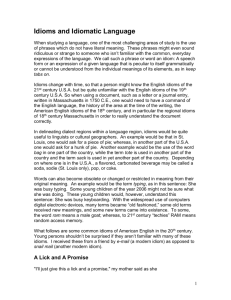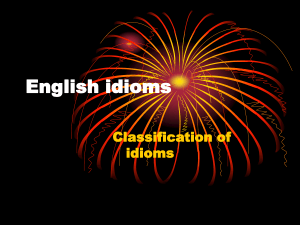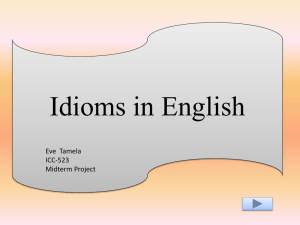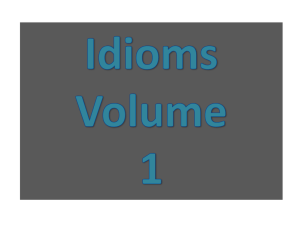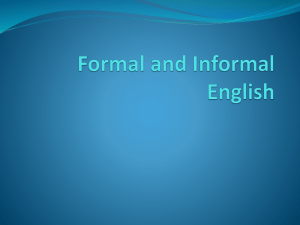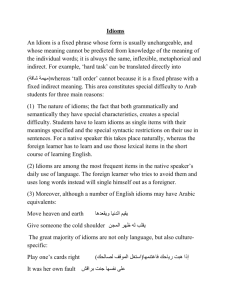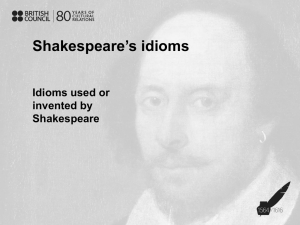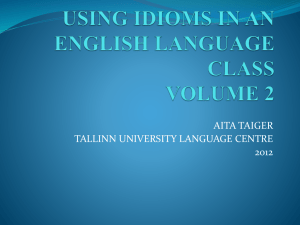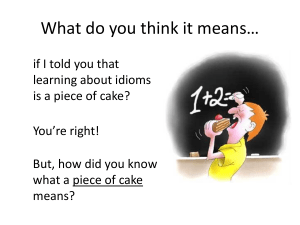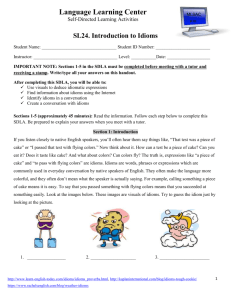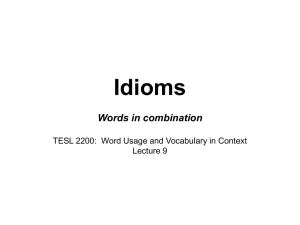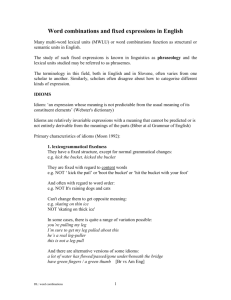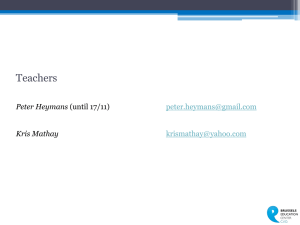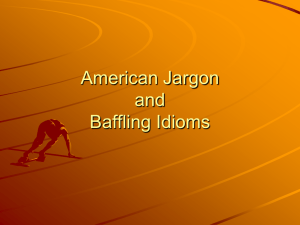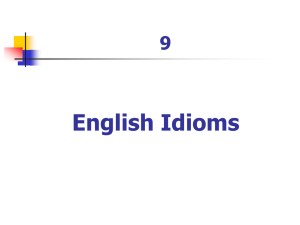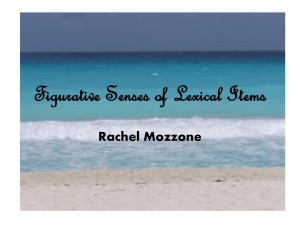English Idioms
advertisement
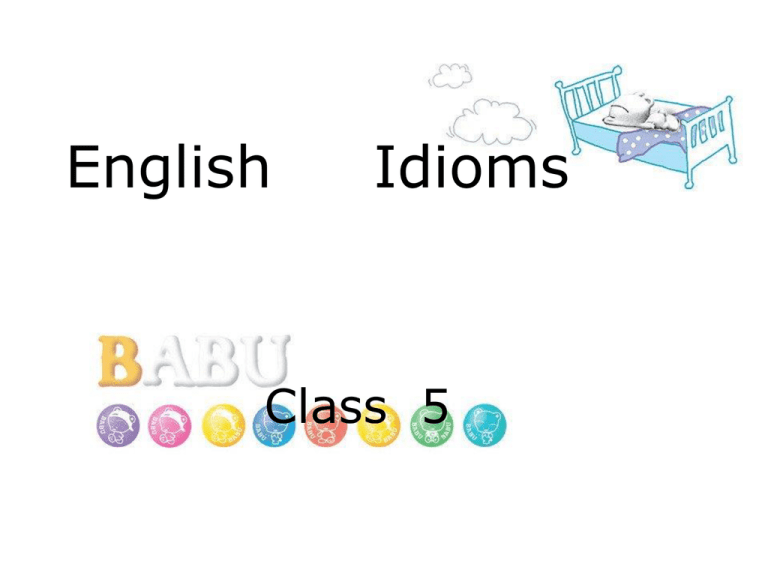
English Idioms Class 5 Idioms Verbal in Nature This is the largest group of all. The structures of such idioms are quite complex and thus can be subdivided into phrasal verbs and other verb phrases . ( 1 ) Phrasal Verbs phrasal verbs are idioms which are composed of a verb plus a prep or a particle. a verb + a prep / a verb + a particle For example : ( 1 ) look into [ vi + prep ] ----investigate ( 2 ) go on [ vi + adv ]----continue ( 3 ) get away with [ vi +adv+ prep ]-----do something wrong without being punished ( 4 ) make out [ vi + prep ] -----manage; understand. ( 5 ) sit down under [ v + adv + prep]---bear; stand 2. Other Verb Phrases 1) give me a hand [ v + pron + n]---please help me 2) make up one’s mind [v + poss + n]-----decide 3) feet on the ground [ v + prep phrase]----sensible ideas 4)face the music [ v + n ]----accept the criticisms, unpleasant consequences Idioms Adverbial in Nature 1. tooth and nail [ n + conj + n ]----with great violence and determination. 2. in nothing flat [ prep + n + a ]----in a very little time; soon. 3 . With flying colors[ prep + n + n ]---succeed very well Sentence Idioms As the term suggests, all idioms of this category are complete sentences. They are mainly proverbs and saying, including colloquialisms and carthphrases. sentence types: Declarative 陈述句 Interrogative 疑问句 Imperative 祈使句 Exclamation 感叹句 In terms of complexity they can be further divided into simple, compound and complex sentence. A hero is nothing but catches the worn. 时势造英雄. ( simple ) One boy’s a boy; two boys are half a boy; three boys are no boy at all. ( compound ) 一个和尚挑水吃,两个和尚抬水吃,三个和尚没水 吃. Wisdom is to the mind what health is to the body . ( complex ) 知识之于心灵正如健康之于身体. Use of Idioms The study of idioms is not just to know which are idioms and which are not, but also to understand them correctly in actual context and use them properly in production. To achieve this, one needs to be aware of the rhetoric characteristics of idioms such as stylistic features, rhetoric features; their occasional variations and idiosyncrasies under unique circumstances. 1. Stylistic Features As we know from their sources, a large proportion of idioms were created by seamen on the sea, hunters in the woods and so on ,employing familiar terms that are associated with their own trades and occupations. For example. in deep water—used by seaman kill two birds with one stone—used by hunters a fish out of water –-used by fisherman Such expressions were all colloquial and informal and once confined to a limited group of people engaged in the same trade or activity. But they proved terse, vivid, forcible and stimulating so that later they broke out of their bounds and gradually gained wide acceptance. This type idioms divided into 1.Colloqualisms 2. Slang 3.Literary Expressions 1.collquialisms For example (1) rub somebody up the wrong way---annoy somebody He is well enough intentioned, but he always seems to rub people up the wrong way (2) big wheel---an influential or important person Uncle John is a big wheel in Washington, maybe he can help you with your problem. 2. Slang For example (1)put someone in the picture---cause someone to be fully informed about something I don’t know much about the plan they have worked out, can you put me in the picture? (2) Hit the sack---go to bed I’m sleepy; let’s hit the sack. 3. Literary Expressions For example (1) hold up---stoppage or delay The traffic was help up by the accident. (2) come to pass---take place, happen Strange things come to pass in troubled times. Thank you !

